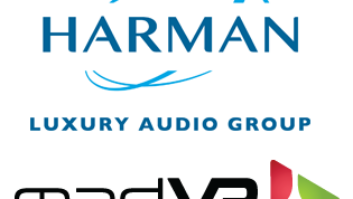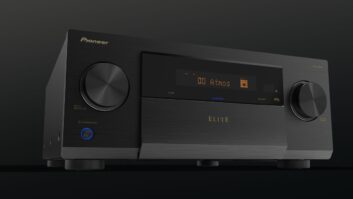NEW YORK — HDMI 1.4 inputs
and outputs appearing in new home audio
products are theoretically capable of
passing through, or repeating, all of the
3D broadcast formats supported in the
HDMI 1.4a specification, although audio
suppliers should confirm for themselves,
HDMI Licensing president Steve
Venuti told TWICE.
Several audio suppliers have confi rmed
that new HDMI 1.4-equipped A/V receivers
(AVRs), active sound bars and
home theater in a box (HTiB) systems
unveiled by them so far this year will repeat
all of the 3D video formats outlined
in the HDMI 1.4a spec. At least one company
will offer a firmware upgrade to the
HDMI 1.4 inputs and outputs of recently
announced AVRs and AVR/speaker
packages to add compatibility with all 3D
formats. Some suppliers said they’ll even
offer firmware upgrades to select current
and newly announced 1.3-equipped products
to upgrade them to 1.4 or 1.4a.
The recently announced HDMI
1.4a spec added requirements to support
3D broadcast content in the following
formats : Side-by-Side Horizontal
(1080i at 50 or 59.94/60Hz)
and Top-and-Bottom (720p at 50
or 59.94/60Hz as well as 1080p at
23.97/24Hz). They join HDMI 1.4’s
requirement to support Blu-ray disc
and game content in the frame-packing
formats of 1080p
a t 23.98/24Hz
and 720p at 50 or
59.94/60Hz.
In displays
whose inputs are
certified as 1.4acompliant , the
spec requires the
display to decode
and display content
in all of the 3D
formats outlined in
the 1.4a standard. On the other hand,
sources with HDMI 1.4a outputs need
support only one of the 3D formats,
and repeater devices such as AVRs
must be able to pass through all mandatory
formats.
The 1.4 spec, Venuti explained, “sets
two mandatory formats — the Blu-ray
one and a game content format. TVs
would have to support both. [The]
1.4a [spec] adds another two mandatory
formats [broadcast formats], and
with 1.4a, TVs would have to
support all four.” He noted that
“many of the TVs that were built with
1.4 have already implemented the two
broadcast formats because they saw
the market need, even though it was
not required by the 1.4 spec.”
In repeater devices such as AVRs,
Venuti said, “I do know from our tests
that if an A/V receiver can handle the
frame-packing formats required in 1.4,
they will not have a problem technically
handling the 1.4a frame-compatible
formats, which are essentially the
same video structure of 2D video.” He
noted, however, that he was “speaking
in a ‘theoretical’ sense” and that individual
suppliers would have to determine
compatibility for themselves “because
there may be some nuances that
I am missing.” (See story, this page,
for details on audio suppliers’ HDMI
1.4 plans.) The 1.4a broadcast formats,
he said, are actually “the easier
of the mandatory formats for AVRs
to pass through,” but he added, “I don’t
think we can say for certain that [1.4-
equipped audio products] may not
need some firmward upgrade to ensure
that they will decode the formats properly
based on the spec.”
The HDMI 1.4a spec addresses only
the 3D broadcast formats and doesn’t incorporate
any other enhancements compared
to HDMI 1.4, he added.













